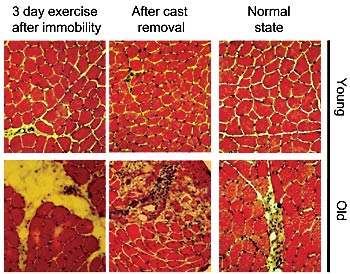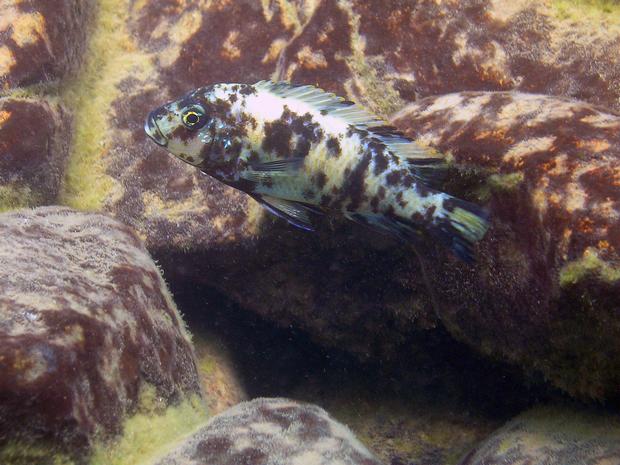Reduviasporonites were tiny organisms that covered the planet more than 250 million years ago. According to new research in Geology, they appear to be a species of ancient fungus that thrived in dead wood and the researchers believe that the organisms were able to thrive during this period because the world's forests had been wiped out.
Researchers had previously been unsure as to whether Reduviasporonites were a type of fungus or algae but by analyzing the carbon and nitrogen content of the fossilised remains of the microscopic organisms, the scientists identified them as a type of wood-rotting fungus that would have lived inside dead trees.
Researchers at the University of California, Berkeley say they have identified critical biochemical pathways linked to the aging of human muscle and, by manipulating these pathways, they were able to 'turn back the clock' on old human muscle, restoring its ability to repair and rebuild itself.
Biologists from the University of Maryland writing in Science have described the genetic basis for two co-existing systems of sexual determination in cichlid fish from Lake Malawi and, in doing so, identified a mechanism by which new sex chromosomes may evolve.
In nearly all mammals, the SRY gene determines the sex of offspring and is located on the Y chromosome, which is much smaller than the X chromosome but in many other animal groups the genetic mechanism of sex determination evolves quite rapidly and the differences between sex chromosomes are harder to observe.
By thinking about packaging size and shape, major environmental gains can be made, says Renee Wever, who will defend his thesis on this topic at Delft University of Technology (The Netherlands) on Monday 5 October. This is a different focus than recycling, the traditional method of environmental savings which hasn't really worked out.
Smaller-sized, more easily handled boxes require less transport and the Dutch packaging industry alone is worth billions of dollars annually. More cleverly designed packaging options could result in significant savings, suggests Wever. According to him, there are also considerable environmental benefits to be achieved, though by focusing on different aspects than usual.
Estimates can be funny things because usually they're brought up by people with agendas rather than people interested in objective analysis. Some estimates in competitive sports put athletic doping usage at 95%, for example, which sounds ridiculously high unless your slippery slope meter works overtime.
What about academia? The non-medical use of methylphenidate and amphetamine is as high as 25% on some US college campuses, particularly in colleges with more competitive admission criteria, says Vince Cakic of the Department of Psychology at the University of Sydney. And the use of smart drugs - "nootropics" - to boost academic performance is increasing.
A research team led by Dr Howard Falcon-Lang from Royal Holloway, University of London, analyzed spectacular discoveries of 300-million-year-old rainforests in Illinois coal mines and came to a conclusion that won't surprise most - Mother Nature is resilient.
Climate change wreaked havoc on these early rainforests but they quickly bounced back, they write in Geology. The ancient rainforests date from the Carboniferous period, 300 million years ago, when most of the world's coal resources were formed.
 Study: Caloric Restriction In Humans And Aging
Study: Caloric Restriction In Humans And Aging Science Podcast Or Perish?
Science Podcast Or Perish? Type 2 Diabetes Medication Tirzepatide May Help Obese Type 1 Diabetics Also
Type 2 Diabetes Medication Tirzepatide May Help Obese Type 1 Diabetics Also Life May Be Found In Sea Spray Of Moons Orbiting Saturn Or Jupiter Next Year
Life May Be Found In Sea Spray Of Moons Orbiting Saturn Or Jupiter Next Year







